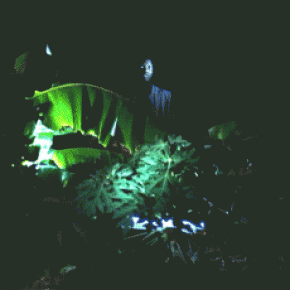Superpower: Africa in Science Fiction
Exhibitions Sat 5 May - Sun 1 Jul
Free
João Maria Gusmão & Pedro Paiva
Kiluanji Kia Henda
Luis Dourado
Mark Aerial Waller
Neïl Beloufa
Neill Blomkamp
Omer Fast
Pawel Althamer
The ARPANET Dialogues
Wanuri Kahiu
 Superpower: Africa in Science Fiction surveys the recent tendency for artists and filmmakers to apply the forms and concerns of science fiction to narratives situated in the African continent. It considers the complex undercurrents for this occurrence in art today, and posits other and possible realities existing simultaneously, via careful re-orientations of tense; elevating the need for vigilance towards the present and future over a concern for the past.
Superpower: Africa in Science Fiction surveys the recent tendency for artists and filmmakers to apply the forms and concerns of science fiction to narratives situated in the African continent. It considers the complex undercurrents for this occurrence in art today, and posits other and possible realities existing simultaneously, via careful re-orientations of tense; elevating the need for vigilance towards the present and future over a concern for the past.
Africa has had a rare yet distinct place in popular science-fiction, from the opening scenes of Stanley Kubrick’s iconic 2001: A Space Odyssey, depicting the mysterious appearance of a black monolith in the cradle of civilization, to the recent success of Neill Blomkamp’s debut movie District 9, a multi-layered allegory on South Africa’s recent internal and external tensions. Imagining a new space-time to the typical “third worldist” representations of the African continent, caught in a perpetual state of crisis, the works in Superpower project an alternative landscape of possibilities.
Works include Neïl Beloufa’s compelling video installation Kempinski (2007), a ‘science fiction documentary’ (pictured). In it, a series of short monologues given by inhabitants across Mali describe their visions of the future - from telepathic communication to teleportation - as if they were present realities. Turning the monuments and mausoleums of a failed communism into spaceships, Kiluanji Kia Henda’s series of photographs Icarus 13 (2006) document the preparations for the first ever expedition to the sun led by the Angolan government. Wanuri Kahiu’s filmPumzi (2010), set on a post-apocalyptic Earth, follows a scientist’s quest to regenerate biological life literally underneath a repressive subterranean Nairobi culture.
Gusmão and Paiva film the world as if for the first time, producing an “alien theory” of moments in 16mm, while Mark Aerial Waller’s Superpower - Dakar Chapter(2004), colliding times and video formats, uses TV soap actors from the Senegalese capital as astronomers awaiting a future event. The exhibition also includes garlanded South African movie director Neill Blomkamp’s early short films and Omer Fast’s three-part installation Nostalgia (2009), which reconfigures document and dramatization, past and future. Superpower will be reflexive of the ever-ubiquitous exhibition format of the regional or national showcase, foregrounding the modes of representation rather than considering the artist as a regional representative.
Whilst holding up a mirror to Eurocentrism in the contemporary world, more significantly here, the model of science fiction offers speculative viewpoints on Africa that supersede the necessity of recourse to essentialisms and history. Also avoiding such genres as Afro-futurism, which located the means of producing the future amongst the African diaspora specifically, Superpower: Africa in Science Fiction presents works by artists based across the European and African continents that raise a number of questions around the position of Africa in the collective conscience - actively participating in the battle to represent the future.
Join us for a discussion event relating to the exhibition.
5.00pm-7.30pm
Superpower: Africa In Science Fiction preview
6.00pm-9.00pm
Spike Island Open preview
6.00pm-9.00pm
Picture This, Jimmy Robert, consensus rouge noir (Bristol) preview
6.00pm-8.00pm
Works|Projects, Magnus Quaife, 1968 and Other Myths preview
9.00pm till late
Party in Spike Café

